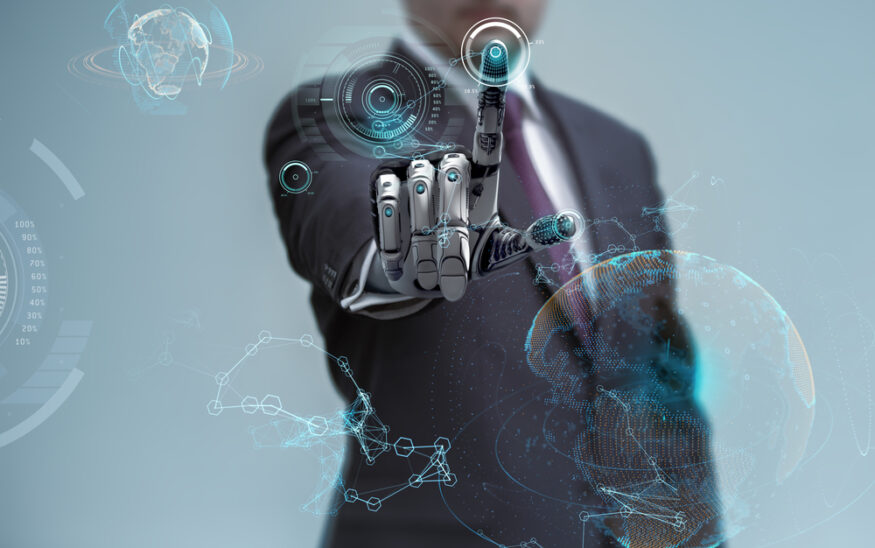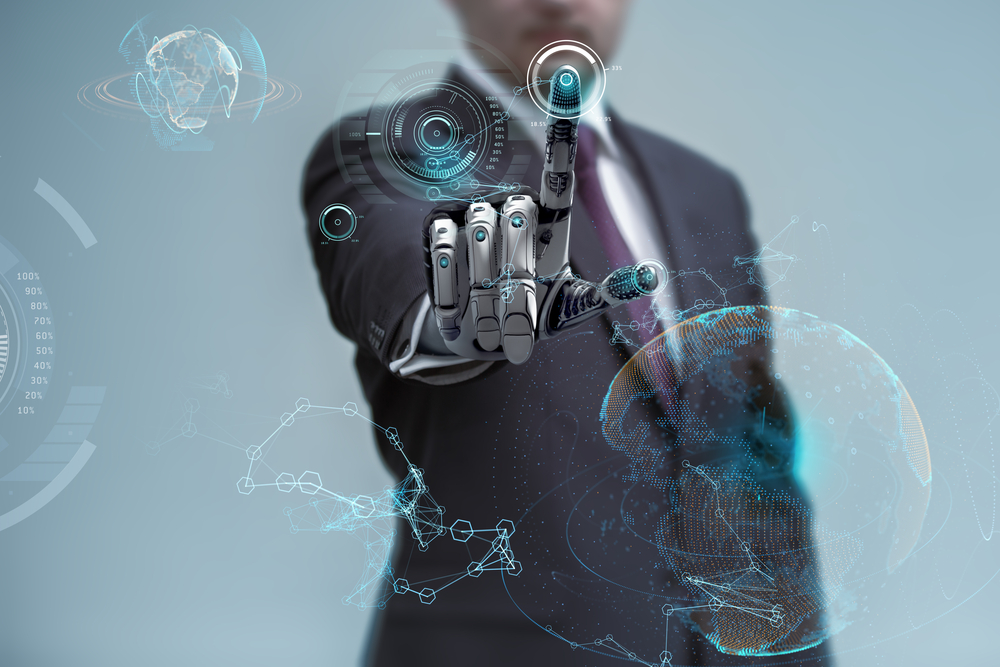How artificial intelligence will revolutionize business
Have no fear: AI is here to help
Dan Sincavage //August 29, 2017//


How artificial intelligence will revolutionize business
Have no fear: AI is here to help
Dan Sincavage //August 29, 2017//

From The Terminator to Blade Runner, pop culture has leaned toward a chilling depiction of artificial intelligence (AI) and our future with AI at the helm. Recent headlines about Facebook panicking because their AI bots developed a language of their own have us hitting the alarm button once again.
Must we feel unsettled with AI in our futures?
News flash: The future is now.
If you ask Siri, the helpful assistant who magically lives inside your phone, to read text messages and emails out-loud, find the nearest pizza place or call your mother, then you’ve made AI a part of your everyday life. Even current weather forecasting systems, spam filtering, and the Google search engine – among so many other practical applications – are AI-powered.
Now, artificial intelligence doesn’t seem so disturbing, right?
WHAT IS ARTIFICIAL INTELLIGENCE
AI refers to machine intelligence or a machine’s ability to replicate the cognitive functions of a human being. It has the ability to learn and problem-solve. In computer science, these machines are aptly called “intelligent agents” or bots.
What is considered artificial intelligence has shifted as the technology develops. Today, there are three recognized levels on the AI spectrum, all of which we can experience today.
Assisted intelligence – This refers to the automation of basic tasks; examples include machines in assembly lines.
Augmented intelligence – Here, AI learns from human input. We, in turn, can make more accurate decisions based on this information. As Anand Rao of PwC Data & Analytics puts it:
“There is symmetry with augmented intelligence.”
Autonomous intelligence – This is AI with humans out of the loop – Think self-driving cars and autonomous robots.
DEEP LEARNING
Technology has finally caught up with faster and more powerful GPUs. Industry observers tack this resurgence to 2015, when parallel processing became accessible. This is also around the birth of the so-called Big Data movement, when it became possible to store and analyze infinite amounts of information.
Thus, we find ourselves in the era of deep learning. Deep learning pertains to the use of artificial neural networks (ANNs) in order to facilitate learning at multiple layers. It is a part of machine learning based on how data is presented, instead of task-based algorithms.
Deep learning has led the way in revolutionizing analytics and enabling practical applications of AI.
We see it in something as basic as automatic photo-tagging on Facebook, a process developed by Yann LeCun for the company in 2013. Blippar, on the other hand, has come out with an augmented reality application that employs deep learning in real-time object recognition.
You can look forward to driverless cars and so much more. Meawhile, we can expect AI to be applied further in business, particularly in decision-making.
AI IN BUSINESS
According to Dr. John Kelly III, IBM senior vice president for research and solutions:
“The success of cognitive computing will not be measured by Turing tests or a computer’s ability to mimic humans. It will be measured in more practical ways, like return on investment, new market opportunities, diseases cured and lives saved.”
AI technology isn’t the end but only a means toward effectiveness and efficiency, improved capabilities and better opportunities. We’ve seen this in several industries that have begun to adopt AI into their operations.
According to a survey by Tech Pro Research, as many as 24 percent of businesses currently implement or plan on using artificial intelligence.
Stand-outs are in the health, financial services and automotive sectors.
In financial services, PwC has put together massive amounts of data from the U.S. Census Bureau, U.S. financial data, and other public licensed sources to create $ecure, a large-scale model of 320 million US consumers’ financial decisions. The model is designed to help financial services companies map buyer personas, simulate “future selves” and anticipate customer behavior. It has enabled these financial services companies in validating real-time business decisions.
The key here is how artificial intelligence systems are able to run more than 200,000 GTM (go-to-market) scenarios, instead of the typical handful. What you get is optimized scenarios that maximize revenues.
It’s a similar case in the fields of retail, marketing and sales.
According to Adobe Marketing Cloud Product Manager John Bates: “For retail companies that want to compete and differentiate their sales from competitor’s, retail is a hotbed of analytics and machine learning.”
AI application development has provided marketers with new and more reliable tools in market forecasting, process automation and decision-making.
MARKETING + AI
There are many complexities to each marketing decision. One has to know and understand customer needs and desires, and align products accordingly. Likewise, a grasp of changing consumer behavior is crucial to making the best marketing decisions, in the short- and long-run.
AI modeling and simulation techniques enable reliable insights into your buyer personas. These techniques can be used to predict consumer behavior. Through a Decision Support System, your artificial intelligence can provide data gathering, forecasting and trend analysis.
CUSTOMER RELATIONSHIP MANAGEMENT
Artificial intelligence within CRM systems enables its many automated functions, such as contact management, data recording, analysis and lead ranking. AI’s buyer persona modeling can also provide a prediction of a customer’s lifetime value. Sales and marketing teams can work more efficiently with these features.
RECOMMENDATION SYSTEMS
Recommendation systems were first implemented in music content sites, and since been extended to different industries. The AI system learns a user’s content preferences and pushes content that fits. This can help you reduce bounce rates. Likewise, you can use the information to craft better targeted content.
EXPERT SYSTEMS
Artificial intelligence has tried to replicate the knowledge and reasoning methodologies of experts through Expert System, a type of problem-solving software and expert systems, such as MARKEX (for marketing),. Output includes assessment and recommendations for specific problems.
AUTOMATION EFFICIENCY + AI
Automation efficiency has gone well beyond the assembly lines of the past
In marketing, for instance, market segmentation and campaign management has enabled more efficient decision-making and action, enhancing interactions with customers.
Distribution automation with the help of AI has also been a key advantage of several retailers. Through AI-supported monitoring and control, retailers can accurately predict and respond to demand.
As an example online retail giant, Amazon acquired Kiva Systems in 2012, which developed warehouse robots. Since its implementation, Kiva robots have been tasked with product monitoring and replenishment, as well as order fulfillment. They can even do heavy lifting. That’s a big jump in Amazon efficiency, compared to the olden days when humans had to do the grunt work.
SOCIAL COMPUTING
Social computing helps marketing professionals understand the dynamics and behaviors of a target market. Through AI, they can simulate, analyze and eventually predict consumer behavior. These AI applications can also be used to understand and data-mine online social media networks.
OPINION MINING
Opinion mining is a kind of data mining that searches the web for attitudes and judgments. It is a way for marketers to know more about how their products are received by their target audience. Manual mining and analyses require long hours. AI has helped shorten this through reliable search and analyses functions.
This form of AI is often used by search engines, which regularly rank interests in specific web pages, websites and products. These bots employ algorithms to get to a target’s HITS and PageRank, among other online scoring systems.
With no Terminator nor Replicant looming in the periphery, there really is no danger to artificial intelligence, only potential. In fact, some experts say AI can actually enhance people’s jobs – rather than steal them –allowing them to work more efficiently.
Surely, this rings true with respect to decision-making.
When business leaders have reliable data analyses, recommendations and follow-ups through artificial intelligence systems, they can make better choices. You don’t just enhance the work of individual team members; AI also improves the competitive standing of the business.
The gap lies in developing artificial intelligence systems that can deal with the enormous amount of data currently available. According to Gartner, today’s data is set to balloon to up to 800 percent by 2020. With this, you get about 80 percent of unstructured data, made up of images, emails, audio clips, etc. At this point, there is nothing – neither human nor artificial – that can sift through this amount of data to make it useable for business.
According to IBM’s Kelly: “This data represents the most abundant, valuable and complex raw material in the world. And until now, we have not had the means to mine it.”
He believes that it is companies involved in genomics and oil that will find the means to mine this resource.
He delves further on the future of AI and analytics: “In the end, all technology revolutions are propelled not just by discovery, but also by business and societal need. We pursue these new possibilities not because we can, but because we must.”
























